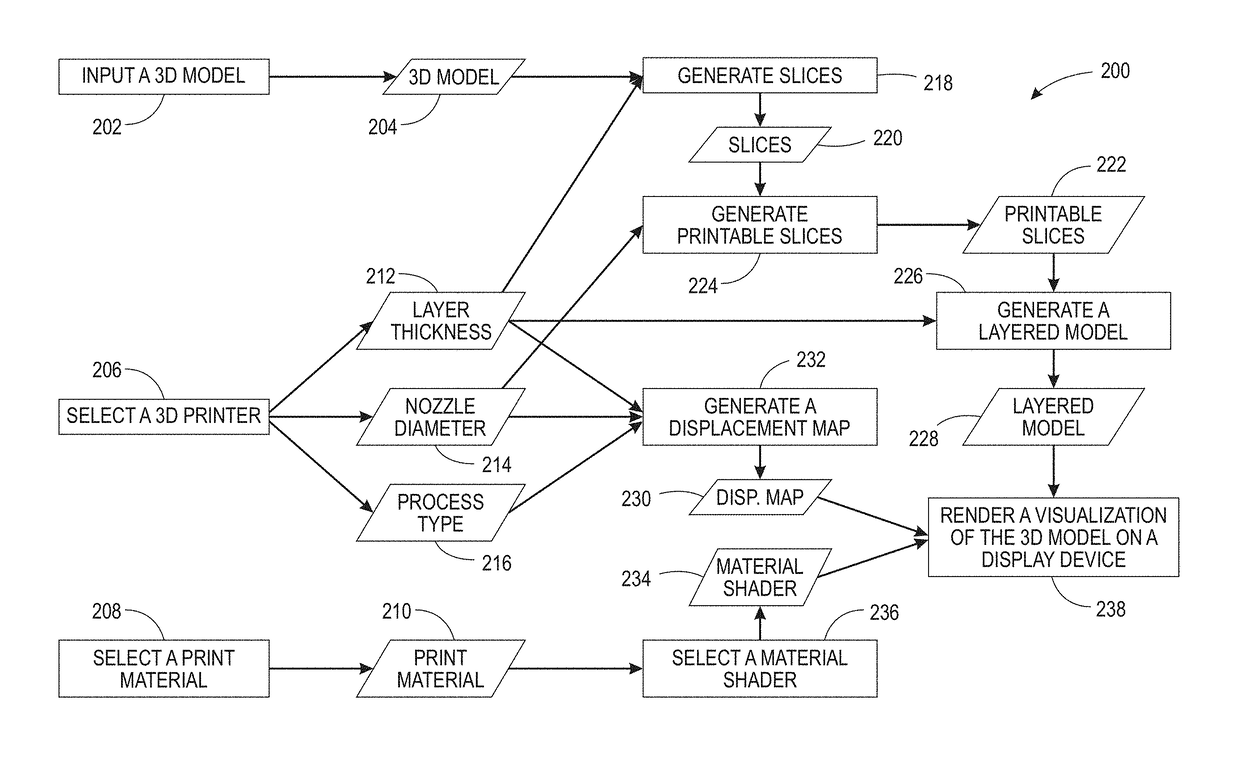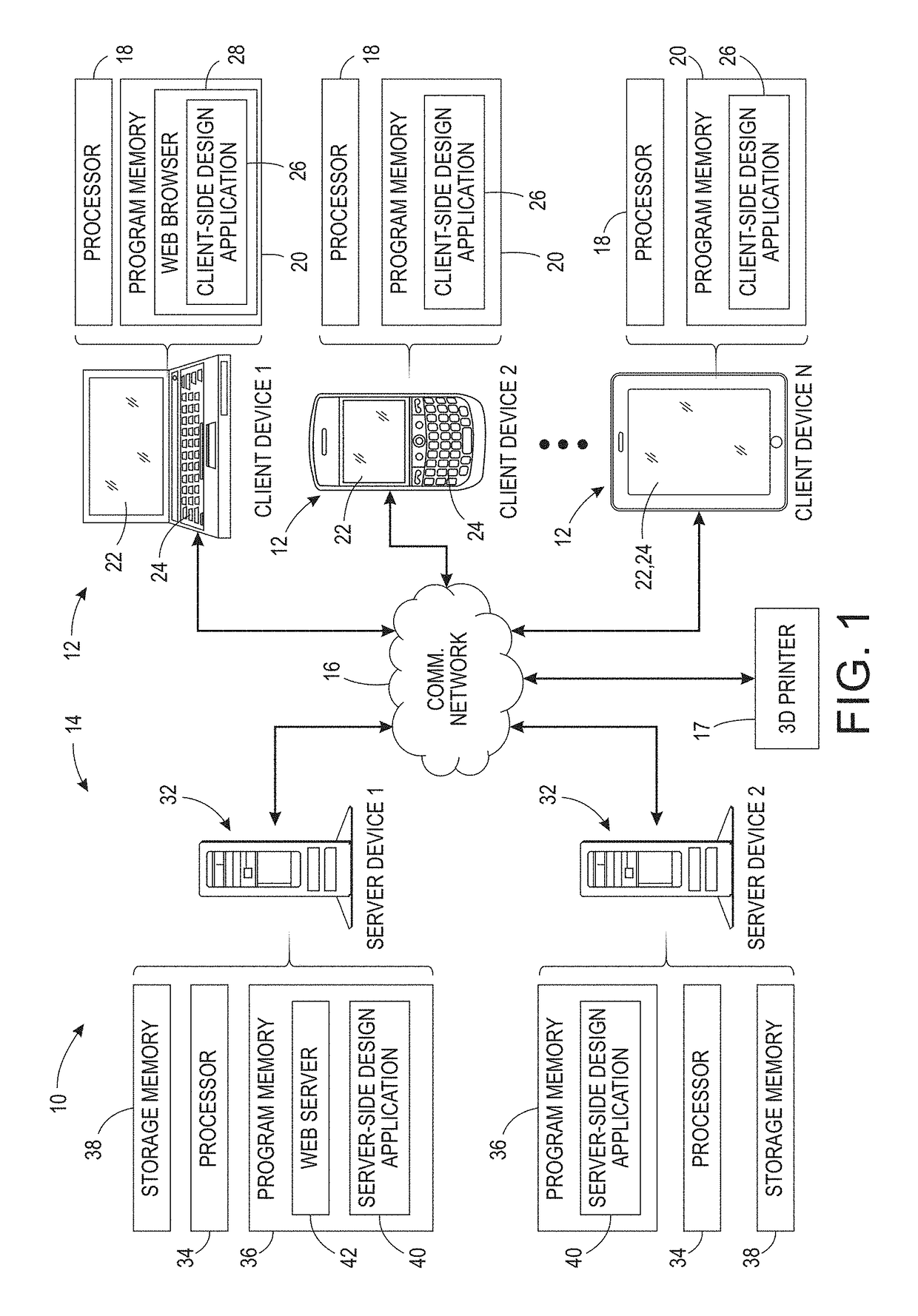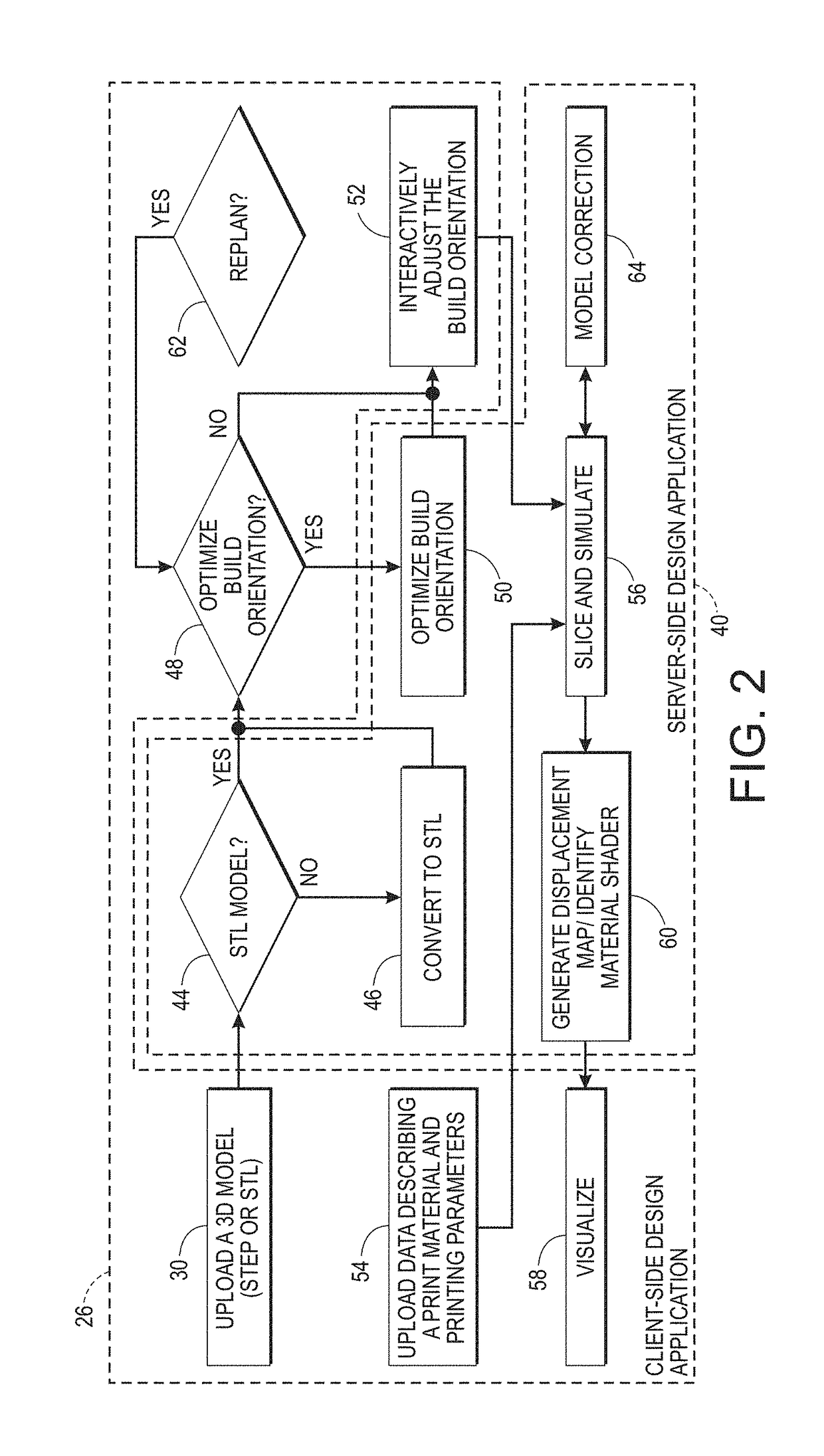System for visualizing a three dimensional (3D) model as printed from a 3D printer
a three-dimensional model and printer technology, applied in the field of three-dimensional (3d) printing, can solve the problems of erroneous belief among many users, the complexity of the parts that can be produced is higher, and the 3d printing now includes a more automated natur
- Summary
- Abstract
- Description
- Claims
- Application Information
AI Technical Summary
Benefits of technology
Problems solved by technology
Method used
Image
Examples
Embodiment Construction
[0051]The present application describes a system to perform design evaluation for three dimensional (3D) printing using manufacturing simulation and to provide feedback prior to printing a 3D solid model. The system evaluates process plans by rapidly analyzing the solid and simulating the layered manufacturing process to identify expected deviations from the intended design. Parameters for the simulation may be tuned based on process and printer specific values. The result of the simulation provides interactive visual feedback that highlights regions that are expected to deviate from design intent, either in appearance or in structural integrity.
[0052]Further, the present application describes a system to perform automated metrology and model correction for 3D printability. Using techniques from mathematical morphology, printability in terms of local size measurements is determined and used to partition the 3D model into regions that can be manufactured up to specified resolutions. ...
PUM
 Login to View More
Login to View More Abstract
Description
Claims
Application Information
 Login to View More
Login to View More - R&D
- Intellectual Property
- Life Sciences
- Materials
- Tech Scout
- Unparalleled Data Quality
- Higher Quality Content
- 60% Fewer Hallucinations
Browse by: Latest US Patents, China's latest patents, Technical Efficacy Thesaurus, Application Domain, Technology Topic, Popular Technical Reports.
© 2025 PatSnap. All rights reserved.Legal|Privacy policy|Modern Slavery Act Transparency Statement|Sitemap|About US| Contact US: help@patsnap.com



